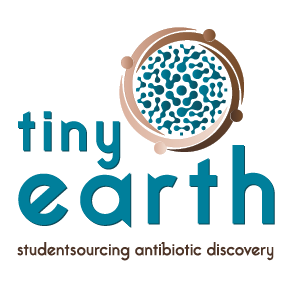
On October 15th, the Wisconsin Science Festival’s Discovery Building Expo – Field Trip Day featured Tiny Earth activities for nearly 1,100 elementary and middle school students. Tiny Earth staff and Handelsman Lab researchers introduced students to the complexity of soil microbes via microscopy, soil dilutions, and spread plating. The Expo explored a wide range of interactive STEM-based activities hosted by labs across the University of Wisconsin-Madison, and Tiny Earth’s table encouraged students to ponder whether or not soil is alive.
Students that stopped by the Tiny Earth table peered into a microscope, allowing them to see the diverse array of bacteria, fungi, nematodes, and other organisms present in soil. Then, they explored the Tiny Earth research flow by diluting and plating soil from the shore of Lake Mendota and a nearby prairie. Pre-grown dilution plates gave students insight into how studying soil microbes can lead to antibiotic discovery.
“I was amazed by how easy it was to adapt the Tiny Earth process to elementary and middle school students, and how quickly the young learners caught on,” Tiny Earth Research Intern and table organizer Josephine Putnam said. “Without prompting, many of the budding scientists generated their own hypotheses about which microbes might prefer one soil environment to another. The students’ enthusiasm and curiosity about soil microbes and antibiotics inspired me.”
Thanks to the Wisconsin Science Festival staff, our volunteers, and attendees for making this a great event!

